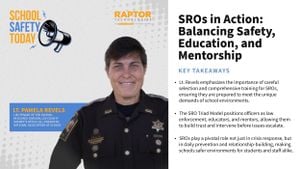NASA is facing critical decisions about the fate of two astronauts currently stationed at the International Space Station (ISS), Barry "Butch" Wilmore and Sunita Williams. After initially planning for their mission to last just eight days, the duo has been stranded for over two months due to significant technical issues with Boeing's Starliner spacecraft.
The Starliner capsule, which ferried the astronauts to the ISS, has encountered multiple problems, including helium leaks and thruster failures. These malfunctions have raised serious concerns about the spacecraft's ability to return the astronauts safely to Earth.
NASA officials are deliberatively analyzing the situation to reach the best decision, aiming for resolution by the end of August. The agency is even considering the option of extending the astronauts' stay aboard the ISS until February 2025, should it become necessary.
If they cannot return aboard the Starliner, the astronauts would likely receive passage on SpaceX's Dragon spacecraft. Utilizing another company's vehicle for their return would not only extend their mission to approximately eight months but would also be considered a setback for Boeing.
Reflecting on their time spent on the station, NASA officials have reported the astronauts are adapting well to the prolonged mission. Ken Bowersox, NASA's associate administrator for Space Operations, noted, "They are doing great and keeping busy with various tasks."
Initially launched on June 5, 2024, as part of NASA's Commercial Crew Program, the Starliner was meant to showcase Boeing's capabilities to transport astronauts. Instead, the retreat of the mission has raised significant questions about the reliability of Boeing's systems.
External experts have anticipated complications during the Starliner's descent if it is eventually used for the astronauts' return. Trust in the spacecraft has been shaken, leaving NASA officials uncertain about its real safety and operationality.
Currently, the leading plan is for another mission to launch on September 24, with the intention of returning Wilmore and Williams approximately six months later. Unfortunately, this means they might remain on the ISS for much longer than initially intended, complicates logistics due to space suit compatibility, which do not match the SpaceX design.
NASA has repeatedly reaffirmed its confidence in the Starliner program. They continue to maintain it as their go-to option for astronaut transport, even if they face hurdles.
Despite the circumstances, Wilmore and Williams understand the inherent risks involved with human spaceflight. Joe Acaba, NASA's chief astronaut, remarked, "This mission was a test flight, and they knew it might not be perfect. Human spaceflight is inherently risky, and as astronauts, we accept this as part of the job."
With no immediate deadline imposed, the planning team at NASA is diligently weighing all perspectives before making any final calls. Avoiding the mistakes of the past, officials aim to create an environment where viewpoints and doubts can be fully aired.
The return of the astronauts via SpaceX's craft would be personally embarrassing for Boeing, who has invested heavily to overcome past failures of Starliner. Nevertheless, NASA's commitment to having diverse transportation options remains firm, with plans for two independent systems.
Observers within the space industry continue to hope for clarity as NASA proceeds with its determinations. Recent data collections on the Starliner's performance indicate challenges, but also offer the potential for insights on returning its crew effectively.
Even if there are positive outcomes from the analysis, the extensive time spent on the ISS is still within the bounds of prior mission experiences. NASA officials have noted their strategy will rely heavily on past mission data to keep astronaut safety and well-being at the forefront.
Planning also involves providing adequate conditions for the astronauts if their stay extends significantly. Just as many previous crews have successfully completed long missions, Wilmore and Williams are set to adapt accordingly.
Despite all the turmoil, both astronauts are equipped to use their training and experience to navigate these uncertain waters. NASA continues to stress the importance of thorough inspections and readiness before any complete decision making.
The upcoming weeks are critical as they finalize evaluations, moving closer to answers for the pressing question of how to safely bring Wilmore and Williams home. Astronauts making the shift from Starliner to Dragon suits would symbolize broader challenges and tensions present within the industry's competitive environment.
Finally, as discussions accelerate, both space and operational teams will work together to explore all potential solutions. This mission represents not just Boeing’s struggle, but also NASA's dedication to ensuring human spaceflight continues to advance safely.



